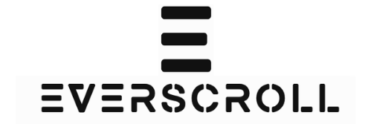Fad Gadge Tovey Feathered photography, forged a path as an early innovator in electronic and industrial music in the late 1970s and 1980s. His innovative use of synthesizers, along with a theatrical and avant-garde performance style, distinguished him from his contemporaries. Not only did Tovey switch gears from electronic music to more acoustic and folk themes, but he was also able to show off his versatility and depth as an artist as well. This feature article provides a deeper look into the art of Fad Gadget, specifically his on the crossroad of his sound and visuals, and how feather photography became a rich visual and symbolic tool.
The Genesis of Fad Gadget
Frank Tovey was one of the label’s first artists, signed to Mute Records when the name became synonymous with innovative electronic music. His first single, “Back to Nature,” came out in 1979 and was an instant draw, thanks to its minimalist synth arrangements and dark, introspective lyrics. Under the name Fad Gadget, Tovey’s music frequently explored technological alienation and social criticism. His distinctive combination of electronic sounds and punk attitudes gave rise to a musical genre known as synth-punk and influenced an entire generation of musicians.
The Graphic Look of Fad Gadget
Tovey’s artistry wasn’t confined to his music; his live performances were famous for their theatricality. He often used all sorts of props and costumes, producing an eye-filling that went with his sonic experiments. Feathers became a repeated motif in his visual presentations. In his performance and album art, one could recognize a reoccurrence of feathers that were symbolic of fragility and yet stood in contrast to his own resilience as an artist.
Hold still: Feather photography in Fad Gadget’s work
Within Tovey’s visual narrative, feather photography developed as an alternative aesthetic. The images were hardly ornamental, though, but rather writing on the wall, so to speak, measuring some of the dichotomies in his work — the organic vs. the mechanistic, the delicate vs. the hard. The feathers can be seen as a take on the human condition in the face of speeding technological advancement, a theme common throughout much of Tovey’s discography.
Feathers were often paired with stark, industrial backgrounds on album covers and in promotional material, a jarring contrast that spoke to the new tension between nature and technology. This visual approach matched the lyrical content of Tovey’s work, which often examined the alienation caused by contemporary society.
Shift to Acoustic and Folk Music
By the 80s, Tovey was starting to delve into acoustic and folk music, dropping the Fad Gadget name in favor of his real name. This was a seismic shift in his artistic career, but thematically every work starts with the same batter. Even in his folk-oriented albums, the examination of human vulnerability and resilience continued, but through a very different sonic palette.
Another feather in the popular works clear of absolutely the big impression of the favourite fashion language explanation of the period of time, can see a specific continuity. It is this adaptability, without losing the essence of his message, that is a testament to Tovey’s insight and creativity as an artist.
Remembering Fad Gadget And Frank Tovey
Frank Tovey had an impact far beyond his music. As Fad Gadget, he helped lay the groundwork for subsequent electronic and industrial artists, incorporating elements of different genres and expanding the notion of performance art. The visual language involved in his feather photography and other photography elements showed a unique grasp on imagery and its relationship to music, and how it can enhance and complement it.
The spirit of Tovey’s work is alive and well, and echoing to new generations who are inspired by the artist’s fearlessness in the worlds of art and music. Fans and scholars alike continue to study and appreciate the synergetic explosion of visual and auditory experiences he creates in his concerts and recordings.
Conclusion(Fad Gadge Tovey Feathered photography )
Fad Gadget, the stage name of Frank Tovey, is an important figure in the history of electronic music. His pioneering use of synthesizers and flamboyant performance style raised the bar in the music industry. These metaphors of fragility and resistance to a reality that is constantly reshaping, or disappearing in the face of technological change are expressed through the repeated use of feather photography in his visual presentation.
Tovey’s legacy as a trailblazer and visionary is already assured, with his work continuing to inspire and influence artists of all stripes. A testament to the ever-expanding reach of his talent, the intersection between his music and visual art, and the unique focus of feather pictures.
Frequently Asked Questions
Who was Fad Gadget?
One of the earliest examples of industrial and electronic music was Frank Tovey, who performed under the name Fad Gadget.
What type of music did Fad Gadget make?
Fad Gadget’s music was an amalgamation of electronic, industrial and punk, and has been described as synth-punk.
What is the significance of feathers within Fad Gadget’s work?
Feathers represented fragility and resilience, themes that lay at the heart of Tovey’s exploration of the human condition and technological progress.
Was Frank Tovey’s music constant during his career or did it change?
From there, Tovey moved from electronic and industrial music to something much more acoustic and folk-oriented — shaking off his Fad Gadget name and using his actual name instead.
What is Fad Gadget’s legacy?
Fad Gadget’s pioneering work in music and performance art paved the way for countless artists and will always be recognized for their cutting-edge contributions to electronic and industrial music.

